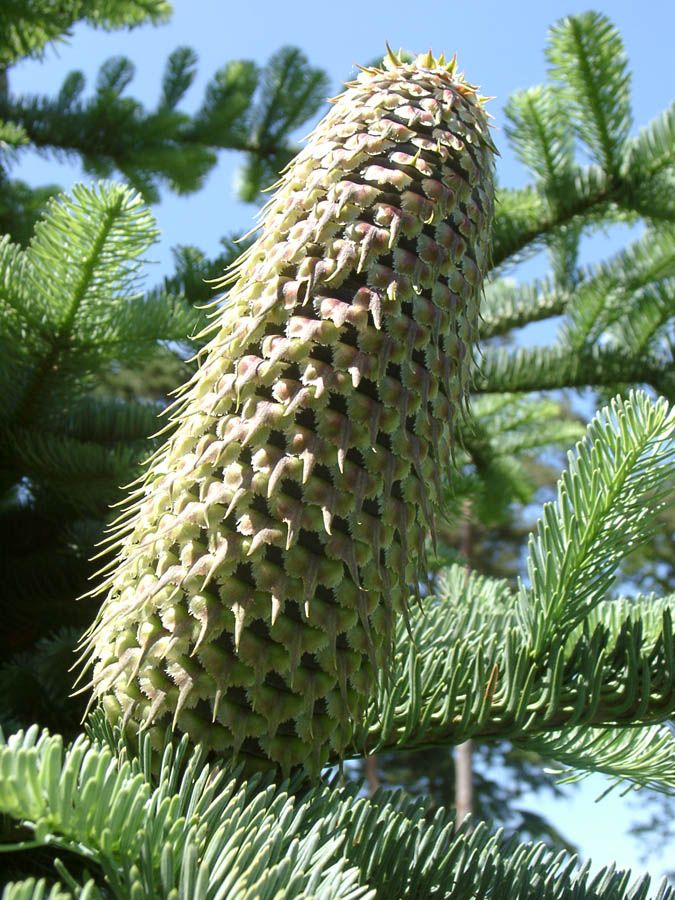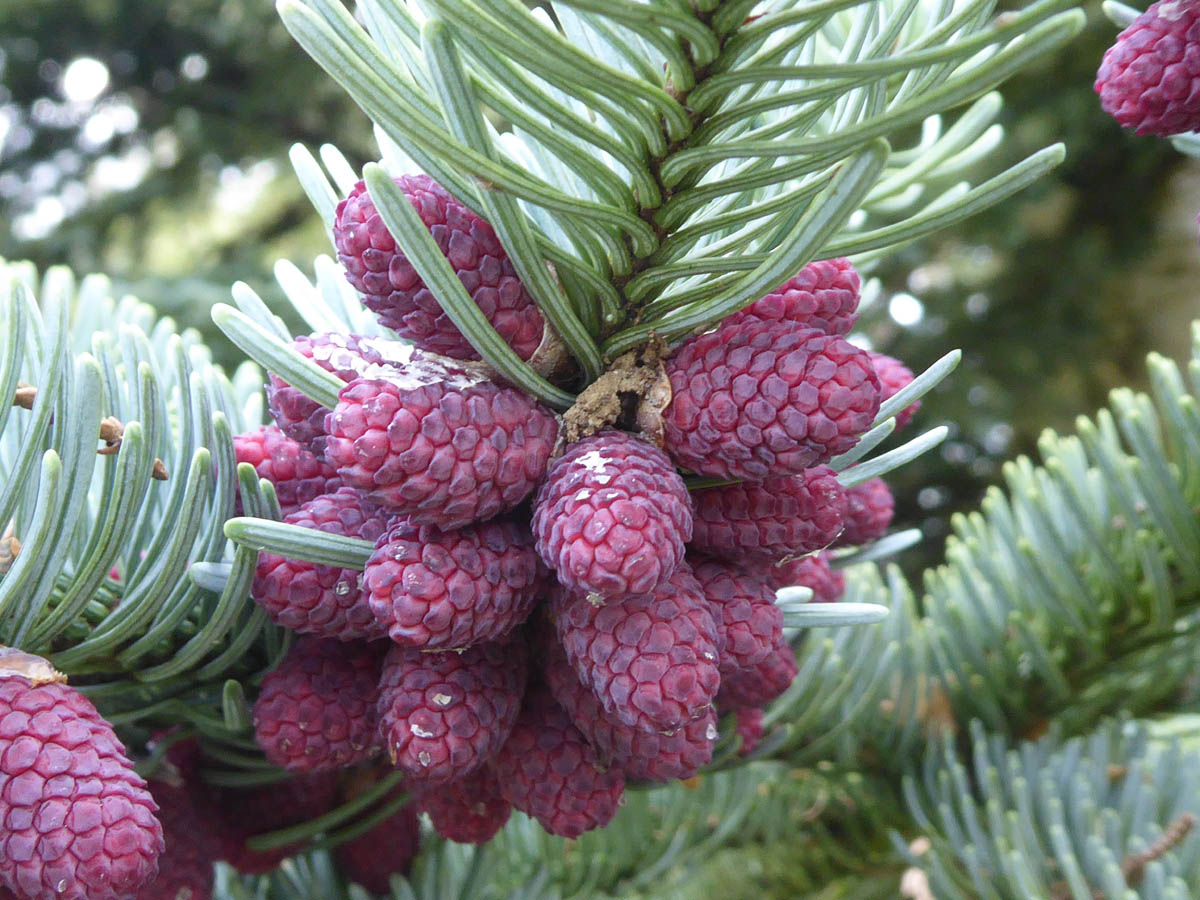Noble fir (NF)
A non-native, under-utilized species that has potential as a productive tree species for forest diversification. It can tolerate exposure better than Douglas-fir and grand fir, can be slow to establish, but subsequent growth is rapid. Its timber is perceived to be poor, but only limited testing has taken place in Britain.
Noble fir is categorised as a Principal tree species. These are tree species where silvicultural knowledge provides confidence to enable successful deployment across Britain. The species are either already widely used or are increasing in usage. They will continue to be important unless affected by a new pest or disease or become adversely affected by climate change.




Range
Native to the mountain ranges of the Pacific north-west of North America in Oregon and Washington: predominantly the western slopes of the Cascade Mountains.
Provenance Choice
A recent review of provenance trials in Britain suggested that seed should be sourced from the Cascade mountains in northern Oregon and southern Washington; provenances from Britain also performed well.
Site Requirements
Best suited to cool moist climates with >1000 mm rainfall. Noble fir grows best on fresh to moist mineral soils of poor to rich nutrient status. It is a high-volume producer under the right conditions but does not perform well on dry sites and can suffer from drought crack.
Moderately wind-firm and compared with other firs it is more tolerant of frosts. It is able to tolerate exposure much better than species such as Douglas-fir or grand fir.
Further detail on the site requirements of noble fir in current and future climates can be examined using the Forest Research Ecological Site Classification Decision Support System (ESC).
ECOLOGICAL SITE CLASSIFICATION TOOL
Silviculture
Noble fir, like many of the true firs, is slow to establish, reports from its natural range indicate it can take 5 to 12 years to reach a height of 1.3 m and this is similar to experience in Britain. However, once established growth can be rapid to produce yield classes in the range 10-18 and occasionally higher.
In its natural range noble fir is classed as a pioneer species and is usually considered to be ‘intermediate’ in terms of shade tolerance, in contrast to many other true firs that are more shade tolerant. Hence when using noble fir in continuous cover management, canopies should be light or groups should be large.
Pests and Pathogens
Noble fir is largely free of major pathogens and is reported to be relatively resistant to Heterobasidion annosum (conifer root and butt rot) but is susceptible to the root and butt rot pathogen Phaeolus schweinitzii. There are numerous foliage diseases (needle cast and rusts fungi) in its native range, but none are considered significant except on Christmas trees.
Of concern is the recently reported disease Neonectria neomacrospora (Neonectria canker of fir). Abies spp. including noble fir are susceptible to infection which can in severe cases lead to death of individuals or groups of trees. Neonectria is not a notifiable disease but it is of interest and any suspected cases can be reported via TreeAlert.
Noble fir is highly palatable to deer and other browsing mammals.
See our other tools and resources
Further Resources
Internal
In addition to the general sources of information for species the following are useful for noble fir.
External
In addition to the general sources of information for species the following are useful for noble fir.
Mason, W. L. (2012) The Role of True Fir Species in the Silviculture of British Forests: past, present and future. Kastamonu Univ., Journal of Forestry Faculty, Special Issue, 15-26.
USDA 2019, Abies procera Rehder, United States Department of Agriculture; Natural Resources Conservation Service, viewed 9 February 2021, https://plants.usda.gov/core/profile?symbol=ABPR
Wilson, Scott McG. (2011) Using alternative conifers for productive forestry in Scotland. Forestry Commission Scotland, Edinburgh.



